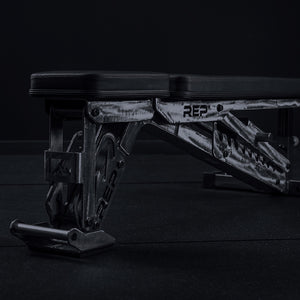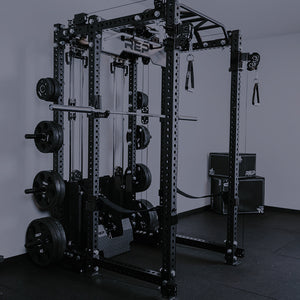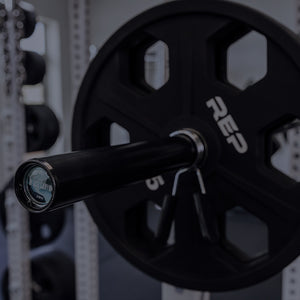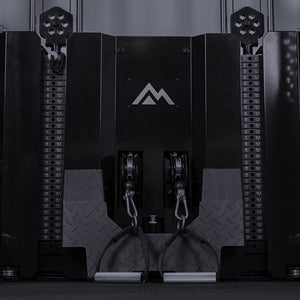
Your warm-up is probably one of two things: too complicated or non-existent.
If you’re the latter – mindlessly loading up a heavy barbell, crossing your fingers, and going for it – that stops now. A proper warm-up can prepare your body, nervous system, and mind for work. It can reduce the risk of getting injured and improve your performance by raising your body temperature and circulation; improving your blood flow; warming up your connective tissues; and more.
But exactly how to warm up is a bit of a debate. That’s why we reached out to three experts on the topic to get their take.
Warm-Ups for the Average Lifter

The proper warm-up depends on what you’re training that day, your unique body, and what your goals are, says Connor Kovacs, IFBB classic physique pro and competitive/lifestyle coach with Team Precision Elite. There are so many different factors that play into choosing a warm-up, and there is no one-size-fits-all approach.
That being said, he says the average lifter may benefit from warming up the body from head to toe, with a closer eye on hips, knees, and ankles. His personal favorite warm-ups that may be useful for the average lifter include:
- Side raises with light weight to bring blood to the shoulder area.
- Band up-and-overs. Stretch a resistance band with two hands so there is tension. Bring it up and over your head, down to your back and glutes, and then back over your head the other direction.
- Walking lunges to open the hips. Use different stride lengths and widths.
“Nothing too complicated,” Kovacs says. “Just enough to bring the heart rate up a little bit, get the whole body warm, literally, and target the areas for risk management.”
Warm Up With Mobility

Trainers at Barpath Fitness recommend adding mobility exercises into your warm-up, and they talk about it in their podcast, “How to Incorporate Mobility Into Your Training.”
Mobility isn’t the same thing as flexibility, they write on their blog. Mobility is the freedom of movement at a joint – the ability to move without restriction. By comparison, flexibility is the distance a muscle can move. Flexibility is typically referring to a muscle and more passive, whereas mobility typically is about the movement at the joint and more active.
Barpath Fitness recommends adding mobility movements to your warm-up that are related to what you’re going to train for the day. Notice they prefer dynamic movements, not static stretches that you hold for an extended period of time.
“The last thing you want to do in your warm-up is static stretching. We want to prep the muscles for the workout ahead. This means moving the joints through a full range of motion, even during your workout prep,” they write.
Personalizing Your Warm-Ups

Jason Wood, with Generation Strength Barbell Club, says the biggest mistake he sees with warming up is the lack of “interception.” That’s being aware of how you feel – in your body and in your mind – and using that to inform your movement choices.
“I think people know they have to do something, but they don’t necessarily know what they’re doing or why,” says Wood, a ACSM-certified exercise physiologist, Z-Health master trainer, USAPL powerlifting coach, and rehab specialist.
Wood specializes in teaching people how to accurately self-assess themselves, so they can make informed and intentional choices for their warm-ups. In his classes, Wood helps lifters understand their body’s “natural hierarchy,” why better balance can unlock better movement, and effective drills for the shoulders, hips, knees, and spine. Whereas a warm-up should be personal, he says a quick balance check should be included in every warm-up.
And it’s not just moving the joints around. Wood says his warm-up begins when he makes his shaker bottle of pre-workout at home. He stands up taller, begins moving his neck and shoulders around, and gets his emotions, feelings, and attitude in the game.
“A warm-up needs to be individualistic, concentrated, and simple. The fewer joints involved with each movement, the better; isolation is key when warming up,” Woods says.
Takeaway
Before you dive into your lifting routine, kick things off with a warm up that'll prime and prep your body for the work to come. Movements that help to active the muscles you plan on targeting, mobility work, and/or a personalized approach that has you checking in with your body and whether or not it's ready to get going.
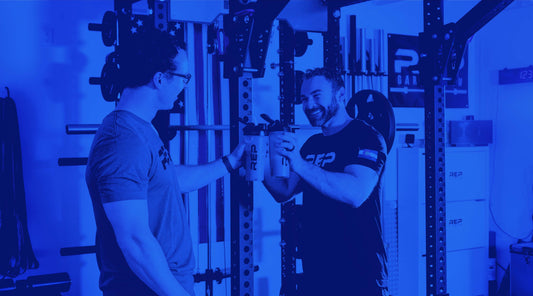
NEWSLETTER SIGNUP
Product launch information, promotions, blogs, and REP news.

